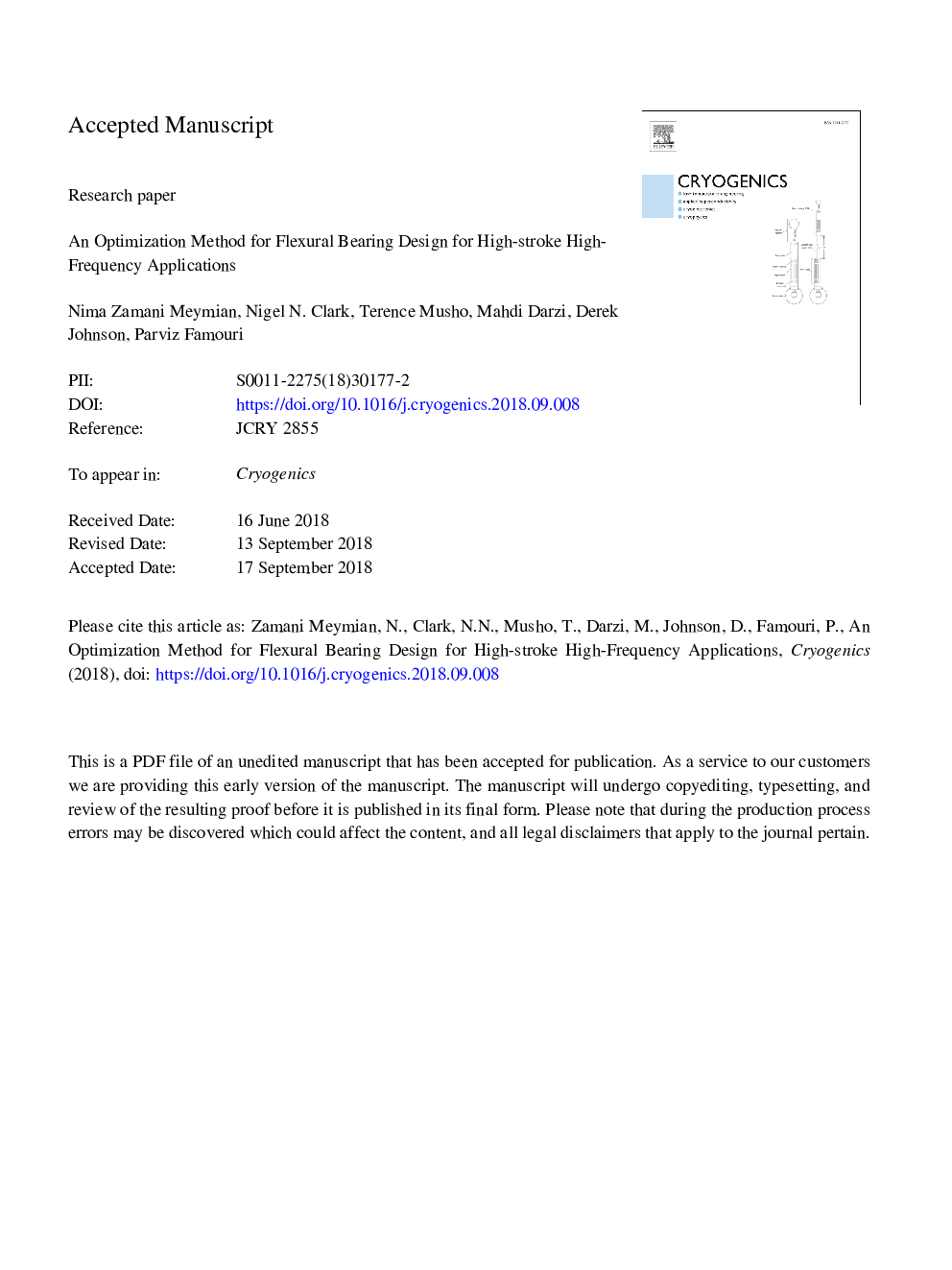| کد مقاله | کد نشریه | سال انتشار | مقاله انگلیسی | نسخه تمام متن |
|---|---|---|---|---|
| 11031131 | 1646081 | 2018 | 29 صفحه PDF | دانلود رایگان |
عنوان انگلیسی مقاله ISI
An optimization method for flexural bearing design for high-stroke high-frequency applications
ترجمه فارسی عنوان
یک روش بهینه سازی برای طراحی تحمل خمشی برای کاربردهای با فرکانس بالا
دانلود مقاله + سفارش ترجمه
دانلود مقاله ISI انگلیسی
رایگان برای ایرانیان
کلمات کلیدی
بلبرینگ انعطاف پذیر، آلترناتور موتور خطی پیستونی رایگان خستگی چرخه بالا، بهینه سازی طراحی، المان محدود،
موضوعات مرتبط
مهندسی و علوم پایه
مهندسی مواد
مواد الکترونیکی، نوری و مغناطیسی
چکیده انگلیسی
A method for optimization of a high-stroke, high-frequency flexural bearing was completed. The main goal was to design a flexural bearing system as the energy restoration component of a one kW free piston linear engine alternator (LEA) operating at 90â¯Hz and maximum targeted displacement of 22â¯mm. Defined electricity output of 1â¯kW, with more than 30% efficiency, required engine operation under high speed and high stroke conditions. Under such challenging stroke and frequency requirements, a method of design was required to select between a wide range of parameters in flexural bearing design. A parametric CAD model was prepared and used in the optimization package of a finite element analysis (FEA) software. Four main parameters of flexural bearing geometry were identified and included the outer diameter, thickness, number of arms, and sweep angle of spiral cuts. Other design parameters including spiral gap width, shape factor and spiral start points angle were shown to be less important compared to these four main parameters in primary design and were examined separately. A neural network algorithm was used to investigate the interactions and effects of design parameters. The sensitivity of each parameter on output criteria such as maximum stress and natural frequency was examined and design charts developed. Methods for further modification of the spiral curve at end points were introduced to reduce the maximum stress level by up to 20%. Several steel alloys and a titanium-based alloy were identified as proper material candidates for high cycle applications and the final designed spring was manufactured and tested to validate the FEA results of axial stiffness and strain level throughout the flexure arms. The percent of the flexure's moving mass was estimated to be 29% with FEA analysis and compared well with the experimental value of 31%. The stress/strain results of the FEA analysis matched with the experimental results - within ±5%.
ناشر
Database: Elsevier - ScienceDirect (ساینس دایرکت)
Journal: Cryogenics - Volume 95, October 2018, Pages 82-94
Journal: Cryogenics - Volume 95, October 2018, Pages 82-94
نویسندگان
Nima Zamani Meymian, Nigel N. Clark, Terence Musho, Mahdi Darzi, Derek Johnson, Parviz Famouri,
